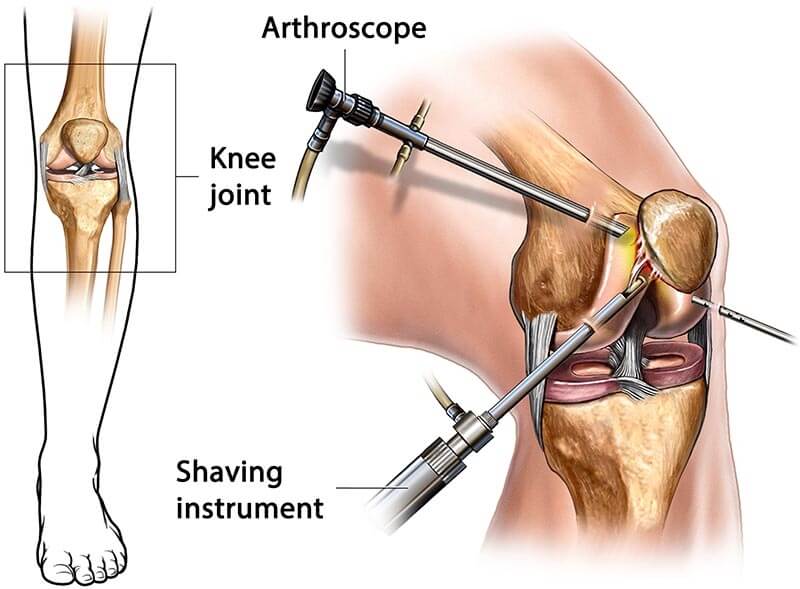
Arthroscopy
is a procedure for diagnosing and treating joint problems. A surgeon inserts a narrow tube attached to a fiber-optic video camera through a small incision — about the size of a buttonhole. The view inside your joint is transmitted to a high-definition video monitor.
Arthroscopy allows the surgeon to see inside your joint without making a large incision. Surgeons can even repair some types of joint damage during arthroscopy, with pencil-thin surgical instruments inserted through additional small incisions.

What Are Advantages?
Every surgery is different and every person responds to surgery differently, arthroscopic surgery tends to have many advantages over traditional surgery.
- There is a lower risk of complications. Since arthroscopy uses tiny incisions instead of large cuts, the chance of infection or other complications is much less.
- There is less post-operative pain. No muscles or tendons have to be cut to repair the joint, so pain is usually much more manageable. Fewer cuts also mean that recovery goes much quicker.
- There is less scarring. The minimally-invasive nature of arthroscopic surgery means that scarring is kept to a minimum.
Arthroscopy Performed at Our Hospital

Frozen Shoulder
Frozen shoulder is a condition that affects your shoulder joint. It usually involves pain and stiffness that develops gradually, gets worse and then finally goes away. This can take anywhere from a year to 3 years.
Your shoulder is made up of three bones that form a ball-and-socket joint. They are your upper arm (humerus), shoulder blade (scapula), and collarbone (clavicle). There’s also tissue surrounding your shoulder joint that holds everything together. This is called the shoulder capsule.
With frozen shoulder, the capsule becomes so thick and tight that it’s hard to move. Bands of scar tissue form and there’s less of a liquid called synovial fluid to keep the joint lubricated. These things limit motion even more.
Sports Injuries
Athletes of today are pushing their bodies further than we once thought possible. An unfortunate byproduct of pushing the envelope, however, is an increase in the frequency of injuries – especially in the knee or shoulder.
Anybody from casual athletes to top-tier professionals are susceptible to injury, but thankfully there are minimally invasive treatment options for many common sports injuries. If an injury does not require traditional open surgery, arthroscopy is great for targeting the injured area without damaging surrounding bone and tissue.

Sports Injuries of the Shoulder Treated with Arthroscopy
- Rotator cuff tears
- Shoulder impingement syndrome,
- (otherwise known as swimmer’s shoulder or thrower’s shoulder)
- Repeated dislocations
Sports Injuries of the Knee Treated with Arthroscopy
- Tears of the anterior cruciate ligament (ACL)
- Tears of the posterior cruciate ligament (PCL)
- Injuries to the collateral ligaments
- Knee dislocation
Diet for Osteoporosis
Bone does not remain static throughout life — it is constantly breaking down and rebuilding as part of normal bone metabolism. Two main types of cellsTrusted Source, osteoblasts and osteoclasts, participate in this process. Osteoblasts form new bone, while osteoclasts...
Medicine for Rheumatoid Arthritis
Rheumatoid Arthritis Drugs: DMARDs If you've been diagnosed with rheumatoid arthritis, your doctor may recommend that you begin treatment with one of several types of DMARDs within a few months of diagnosis. One of the most important drugs in the arsenal for treating...
Diet for Rheumatoid Arthritis
Research shows that the Mediterranean diet's tasty fare -- like olive oil, fish, greens, and other vegetables -- can lower inflammation, which is good for your whole body.In one study of women with RA, those who took a cooking class on Mediterranean-style foods and...



